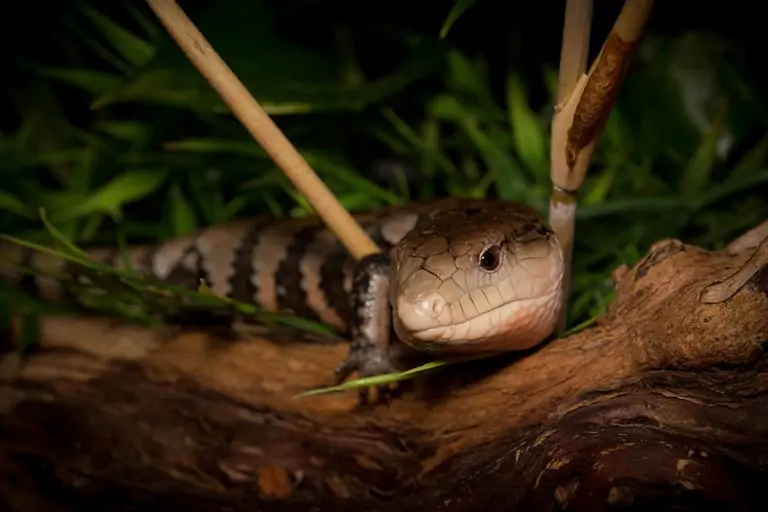
Description:
Scientific name: Tiliqua gigas evanescens
Life span: 15-20 years
The longest Tiliqua species is the Merauke blue-tongued skink. Their spotted limbs, salmon-orange belly, and gray to tan base color with dark banding along the length of the body may usually identify Merauke blue tongue skinks. Typically, the skull has a huge dark blotch behind each ear and a thin dark line behind each eye.

Native Region/Habitat
The tropical regions of Indonesia and Papua New Guinea are the native habitat of the Merauke blue-tongued skink.
Behavior:
Due to their diurnal lifestyle, blue tongue skinks are active during the day.
Blue-Tongue Skinks generally make excellent pets due to their gentle, sociable demeanor and simplicity of training. They are the perfect reptiles for rookie and experienced owners alike because they are low maintenance and require little care.
Care As a pet/In captivity:
Tank: Because they are highly active animals, your Merauke Skink will want a sizable cage of at least 50 to 60 gallons, though larger is preferable. The best material is PVC because it is lightweight and weatherproof; however, glass can also be used. It is much easier to spot-clean the tank with ease if the enclosure opens from the front rather than the top, which you should do every day or two.
Heating (Temperature & Humidity): In order to thermoregulate (go from one temperature to another as needed), skinks require a temperature gradient inside their container. The ideal way to do this is with under-tank heating, a ceramic heat lamp put on one side of their enclosure, and a sizable rock for them to sit on to soak up the sun. A temperature difference between the chilly side and the basking area of about 75–82 degrees Fahrenheit is required.
By lightly spraying your Skink’s enclosure each day using a misting bottle, you can easily maintain humidity. A hygrometer should be used to measure the relative humidity, which should be between 60 and 80 percent.
Feeding Your Merauke Blue Tongue Skink: Because they are omnivores, Merauke Skinks require a balanced diet that includes both plants and animals. As they grow, they will require more animal protein in their diet (about 70–80% total), which can be decreased to about 50–60% animal protein after the first two years. Providing a Skink with as much variety in their diet as you can is the key to keeping them healthy. Little frozen mice, pinkies, insects, and mealworms are examples of animal feeds, as are occasionally high-quality dog or cat foods.
Table





